MY REASONS FOR BLUE CEDAR KENNELS
The motivation for our breeding program comes from our love for dogs and all they represent. But this is not about that. It’s an overview of my rationale for how our breeding program got to this point plus an opinion or two.
This web site originated as a way for prospective buyers to see photos and videos of our puppies to help them make their decisions. Over the past 17 years it has grown but hasn’t changed a lot. I added a few pages to help the people who bought our puppies with their training. Next came a couple of posts to try to explain why our lines are developing such reliable characteristics but I need to rewrite them. From the beginning my goal has been to show anyone who was interested what we did and what the results were. If you want to know what happens when you cross six breeds over a bunch of generations, here are the pictures, videos and health records of our results.
Now I would like to tell you some of my background and what I have been doing with our dogs.
When we started the breeding program I had no idea what to expect. I graduated with an honors High School diploma in a 5 year ‘Science, Trades and Technology’ option. I went on to graduate from Vancouver College for Computer Electronics, B.C.I.T. for Process Control, Automation and Instrumentation and I earned my Bachelor of Science from the University of Saskatchewan where I was focused on biochemistry and genetics but took a lot of extra courses that didn’t apply to my degree; psychology, philosophy, education and a few from the Veterinary College that’s part of the U. of S. Their developmental embryology course was one of my favorites.
I consider education to be a luxury. I didn’t go to school to get a job, I got a job to go to school. I bartended night clubs to support Tooie and the kids through my entire university education in Saskatoon. I made good tips and I made good grades. At the same time Tooie was a mom and took part-time classes to complete her Animal Science degree. Then I was a house husband for a couple of years while Tooie got her Bachelor’s in Education. She also took extra courses in Early Childhood Education and English Second Language.
I thought with that background I had a thorough understanding of breeding, the strategies and methodologies, so everything I observe should make sense. But Tooie brought home a couple of flyball height dogs and everything changed. What I saw were numerous contradictions to what school taught me to expect, which meant my knowledge from years of university was still seriously incomplete, not wrong, everything was still applicable, but lacking.
Twenty years ago the internet was still new. No one was posting on Facebook. And only a couple of litters of sport mixes had been bred, BorderJacks and BorderBorders. Not only were there no BorderWhippets, every single person that I talked to for years thought that crossing to Whippets was a terrible idea, except for one couple that saw the potential.
In Pahrump I took groups of our dogs running 9 hours a day, 6 days a week, 10 months a year for 10 years out on the open Mohave desert miles from people. I watched house dogs turn into a pack. I saw alpha dominance in the home turn into alpha protection in the wild. On the desert the alpha dog is the glue that holds the pack together. All the others are routinely checking on the alpha and their direction and parallel their movements. Under a threat, typically a coyote, everyone rallies behind the alpha which is why they need the alpha to be the strongest dog. I was constantly changing the members of groups around so I saw how easily the dogs adjusted without any hostility once they had adopted a pack mentality. Although there was one lone incident near the beginning, I was out with a group of seven dogs when three dogs mutinied and demoted an alpha.
I saw followers become leaders and leaders become followers depending on what the pack encountered. When we went into a new area the most adventurous would take the lead. If we encountered a person the most social dog in the group took the lead. It was very interesting watching their complex dynamic social interactions.
I got to compare purebreds with their crosses and watched inheritance working through generations of dogs out on the desert, playing and working together to hunt effectively. And then I watched them all turn back into kennel dogs with counterproductive behaviors during the hot part of the summers.
Small dog sports require short periods of acceleration and maneuvering with speed. Maximizing them requires a trade-off with top speed and endurance. They depend on conflicting physical and biochemical characteristics. There was a lot of hunting and chasing on our runs and on the desert it is almost all in plain sight. I got to watch it a lot and knowing everyone’s history helped me determine how inheritance was creating what worked best. It took a few years for me to learn the basic rules guiding physical inheritance in our lines and get good at predicting the outcomes. Learning which combinations of characteristics gave the best performance was my main focus on our runs for the first while. There are different ways to create similar results.
How dogs learn from experience and observation (LEO) without language has always been what I wanted to understand most. We are very slow at learning this way compared to dogs because we are taught to rely heavily on language. I don’t want to downplay the value of language. I just want to point out that the rules governing how we learn from language are very different from the rules governing LEO. Since most of our dogs don’t compete I have had a lot of dogs that I can experiment with. Creating different ways to uncover their learning skills, playing with different training strategies, has been my greatest enjoyment.
The next step was applying what I was learning to puppy development and figuring out how to create the best first 10 weeks of their life.
Searching for a genetic mechanism built on randomness that allows the predictability in inheritance that I was observing was the stumbling block. In 2016 I went back to studying new research and found the observations and theories that explain what I have been experiencing. It’s a combination of Dr. Raymond Coppinger’s theory of the dog’s process of speciation along with punctuated equilibrium plus the genetic toolbox and hierarchies of dominance in the control of developmental genes. The Man And Dog video in my TV section has Dr. Coppinger discussing a bit of what he’s learned. I am hoping to expand on the other topics.
No education is required to be an expert in learning from reality, almost everything that is alive is surviving incredible pressures. What you should learn from school are advanced strategies that accelerate learning through observing what happens in the real world. The key to discovering new information is in creating the situations that allow you to experience what you want to learn and later successfully predict outcomes. The basic rule is that reality does not contradict itself. And right there is the basis that Blue Cedar was built on. I had no idea what mechanisms would be in play, but I was going to figure out how to make small companion dogs with the ability to get a gold in world’s agility. Doing it by combining my choice of six breeds without inbreeding is a great challenge. What has resulted is the expression of the characteristics that I feel will lead to our offspring’s success. The reason changes have happened far faster than I was expecting is because I’m selecting for dominant traits. The best times on our flyball height dogs have dropped from the low 4.0’s to the low 3.7’s in a few generations.
I have been working 16 hours a day, 365 days a year for a long time taking care of our dogs with Tooie. Every day is a race. Since we started we have sold on average around 10 puppies a year. It sure looks crazy seeing it written down. I’m not very good at business. I hope this helps to explain what’s been going on behind the website and why.
-
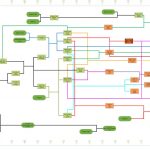
BREEDING TIMELINE with COI
-

ASSOCIATIONS, CONDITIONING AND STRATEGIES
-
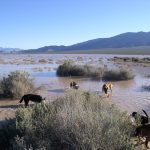
Introduction: My Reasons for Blue Cedar
-
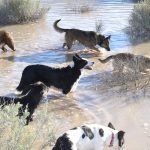
BEHAVIORS
-
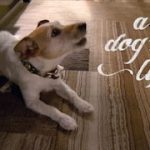
A DOG'S LIFE - THE NATURE OF THINGS
-

MEET DOMESTICATED FOXES - THE VERGE
-
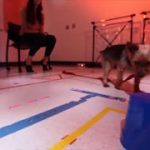
MYSTERIES OF THE ANIMAL MIND - THE NATURE OF THINGS
-
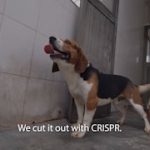
THE GENETIC REVOLUTION - THE NATURE OF THINGS
-
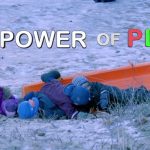
THE POWER OF PLAY - THE NATURE OF THINGS
-

MAN AND DOG - An Evolving Partnership - THE NATURE OF THINGS
